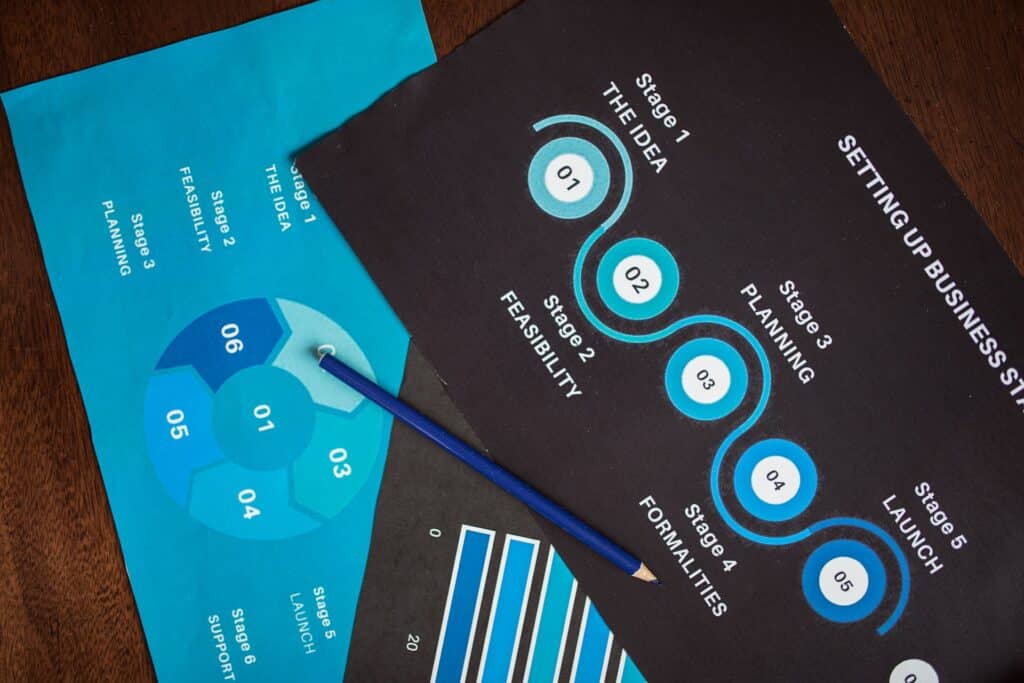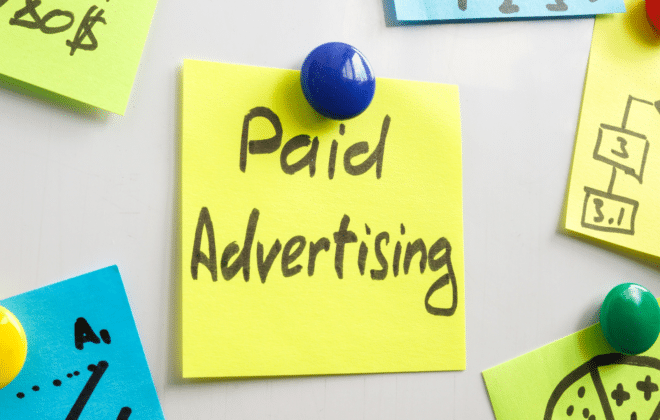
What’s the Ideal Product Promotion Price for Your Next Marketing Campaign? 🦚
Most product promotions fail to generate substantial profit or at least as much revenue as business owners anticipated when it comes to prices. This is frustrating for any business. Worse, for some, the inefficiency continues without management identifying the root problem. They face a lot of uncertainty; and consequently make risky pricing decisions that often result in margin loss. So, we ask what do businesses truly need to implement a game-changing marketing technique that supports an appealing product promotion price?
>Download Now: Free PDF How to Drive Pricing Strategy to Maximise EBIT Growth
What if the promotion is more expensive to implement than it is profitable? What happens if the promotion doesn’t generate the expected amount of interest? At times, unrealistic expectations about how a campaign should operate cause some businesses to continue price promotions at a net loss.
It’s not easy to rectify or upgrade a failing promotional campaign strategy. Especially if it’s been going on for a long time. Marketers sometimes stick to what has previously worked for them. But in most cases, it’s pointless because customer trends are constantly changing. In other circumstances, they simply dodge the issue by driving down prices, often resulting in damaging markdowns.
In this article, we go through all you need to know about a profitable product promotion price. First, we’ll go over the three stages of developing a solid promotional pricing strategy. Then, we show you an example of a retailer that has executed a strong product promotion price. Finally, we provide operational guidelines to help you properly implement your promotional pricing.
At Taylor Wells, we believe that integrating price and promotion will give you the best marketing advantage. By the end, you will gain the best insights to develop an optimal product promotion price for your next campaign.
Table of Contents:
I. Pricing and Promotion Strategies: Developing a Convincing Product Promotion Price
II. Why The Majority Of Price Promotions Fail To Be Profitable

Pricing and Promotion Strategies: Developing a Convincing Product Promotion Price
As technology advances and competition heats up, price and promotion have recently emerged as the two most crucial cornerstones of marketing. Why? The prices of competing products are now easier to compare. Promotions, on the other hand, have grown in significance as the range of advertising channels has multiplied drastically. So, what’s an ideal strategy to market your product?
3 Steps to Set the Right and Profitable Product Promotion Price
An excellent tactic to market your product is to integrate price and promotion. This strategy has yet to be fully perfected by many businesses. But we’re here to assist you. The steps you should take to design the greatest product promotion price are as follows:
1. Examine your customers’ price sensitivity as well as the variables that influence it.
Price sensitivity relates to how buyers perceive the price of a product and react to price changes. Consequently, a higher price sensitivity means that adjusting your costs will not always be well received by your customers. In these circumstances, keeping the pricing competitive is preferable. But what is the most accurate way to calculate price sensitivity?
Data analytics often generate reliable price sensitivity indicators. The process considers input variables such as customers, competition, and corporate concerns. Then, the products are sorted into three groups according to their price sensitivity level:
a. Extreme price sensitivity
This group includes everyday items such as basic groceries and other prices that most customers are familiar with. These commodities often constitute 10-20% of a brand’s total sales. Hence, maintaining low pricing for this category will lead to higher purchase levels.
b. Moderate price sensitivity
This category includes products with qualities that are more significant to buyers than the price. Thus, they don’t require as much pricing competitiveness. Nevertheless, pricing must be competitive enough to prevent an unfavourable effect on buyers’ price sensitivity. Consider the average of the highest and lowest competitor prices – or the lowest margin and suggested retail price when setting the price of these items.
c. Weak price sensitivity
This category comprises products for which price is not an important concern for buyers. This includes commodities for which a price comparison is not feasible. Similarly, the items in this group provide the opportunities for brands to reconsider adjusting their prices with sensitivity.
2. Estimate the probability of your product promotion’s success to determine where to aim advertisements.
Rethink how you evaluate promotion performance to better understand its influence on sales or profits for certain products. Promotion effectiveness is basically a measure of its impact on transactional and customer-based success metrics. Of course, the most significant indicator to consider is how it helped raise sales and profit.
Study the following to gauge the likelihood of the success of your product promotion:
- Buyers’ inclination to purchase the product in the absence of a promotion
- The growth in sales as a result of product discounts
- The total amount of purchase for the promoted product
- Product variety in a customer’s entire check-out purchase
- Purchase behaviour changes
To analyse the factors above, you will need two things:
- A summary of every significant key performance indicator (KPI)
- A method of conveying the aggregate outcomes of all relevant KPIs
These prerequisites will help demonstrate and measure how much revenue or margin a promotion strategy contributes simply by examining the additional sales or gross profit it delivers. It also analyses whether it drew in more clients or increased the volume of their purchase and by how much.
3. Establish your price considering both your customers’ price sensitivity and product promotional strategy.
Businesses must integrate price sensitivity levels and promotional success probability to develop optimal pricing and promotion strategies. Then, we discuss which market price to promote based on 4 product categories:
a. Products with both high price sensitivity and the probability of a successful promotion
Address the price sensitivity of these products by employing a balancing strategy. For example, you should incorporate both maintaining the lowest prices possible and boosting them with discounts. Promotions on products in this segment should aim to increase buying frequency or sales volume.
b. Products with high price sensitivity but a low probability of a successful promotion
Items that normally fall into this category are essentials. We urge businesses to use a low-price approach that is lower than the suggested retail price but higher than a typical product promotion price. It would also help to identify your competitors’ pricing methods.
c. Products with low price sensitivity but a high probability of a successful promotion
A high-low pricing strategy can be effective for products in this category. Set prices that are comparable to the suggested retail or top competition pricing that also cut promo prices. You can change the type, combination, timing, frequency, and focus on product segments with high promotional success.
d. Products with both low price sensitivity and the probability of a successful promotion
It’s best to maximise the margins earned on these products that bring value to your customers. We recommend setting the price on these items similar to your top competitors’ pricing, then minimising or discontinuing promotions after some time. The reason behind this is you don’t want customers to be too dependent on price promotions alone. As a business, it’s your responsibility to communicate the value that you offer. Low prices also can often make buyers question the quality of your products or services.
A Company With A Profitable Product Promotion Price
We’ve outlined the actions you’ll need to take to create the right promotional pricing strategy. Now, let’s take a look at a recent case study below.
An online fashion store’s initiatives to tightly link pricing and promotion strategies produced a significant yield just as their first trial round was over. Their journey will likely be an interesting model for you.
Initially, the majority of the store’s products were sold for less than the listing price. You can already tell that their pricing and promotion strategies involved extensive manual work and were rarely straightforward, causing employee dissatisfaction.
A disconnect between price and promotion not only imposed extra work but also led to lost profitability. The company intended to increase customer trust in its prices and enhance its brand image. Thus, establishing prices that were coherent from the consumer’s viewpoint was crucial for its campaign.
How did the retailer get its promotional pricing strategy rolling?
The management has decided on their promotion pricing after accomplishing the 3 steps in developing a product promotion price. The team performed a two-month trial in one country which went wonderfully. For the marketers, the experimental phase was a triumph. The majority of the findings were further refined and then taken over to additional product categories and countries.
Driven by this achievement, the shop has since implemented a pricing and promotion overhaul across all items and regions. At present, the company anticipates that sales revenue will grow by 3-5% and profits will improve by 2-4% in the next 3 years. Moreover, its brand positioning strategy has already been strengthened and is now significantly less reliant on price deals.
How to be successful with your promotional pricing strategy
Although analytics played a significant role for the majority of their journey, it is not always the solution to everything. After establishing your product’s promotion price, your organisational culture and operational procedures are just as critical to your success.
1. Build a solid operational plan, then put it into action.
First, consult the marketers if you should establish uniform pricing, limit promotions and incentives. Then, start creating the right and applicable pricing and promotion strategies based on your industry, needs, and long-term objectives. Secondly, encourage cooperation among product lines and interdependent teams from marketing, sales, and pricing departments. This solidifies an inclusive, creative, and open communication approach throughout the organisation.
Ensure that you implement the same incentive programme for everyone – to all team members, from pricing to sales, analytics, research, and product or category management are well-informed about pricing and the latest findings about promotional data.
2. Manage your data and resources efficiently to complement your strategy.
Data quality and accessibility become increasingly crucial as businesses continuously integrate price and promotion. Unfortunately, managing data can be both time-consuming and costly. Collecting and organising data requires individuals and technologies capable of deducing, analysing, and translating the findings. Hence, senior management must consequently prioritise this matter. Investing adequately in the execution and recruiting the right talent are just as crucial.
3. Encourage a welcoming working atmosphere and a growth mindset.
All enterprises executing new pricing and promotion strategies face numerous challenges. For example, existing data might be flawed. However, organisations that are eager to experiment and develop will reap the benefits later on.
We recommend talking to your shareholders from the start to ensure that they understand, reject, or endorse the frameworks as they evolve. Like any transformation, this is a great way to guarantee that professionals across teams are ready to implement new procedures.
4. A world-class pricing team will always help you get the best outcomes.
Our findings show that with the right setup and pricing team in place, incremental earnings gains can begin in as little as 12 weeks. Using well-researched price management techniques, the team can capture at least 1.0-2.25% more margin after 6 months. After 9-12 months, organisations are frequently generating 3-7% higher profits every year as they find more complex and previously unrealised possibilities, efficiencies, and risks.
〉〉〉 Get Your FREE Pricing Audit 〉〉〉
Conclusion
For this article, we mapped an action plan and enumerated success indicators for a profitable product promotion price. Through our work and consultation with businesses over the years, a good strategy can only arise from a combination of analytic methods, trial and error, skill competencies, and expertise. As new technologies become more widely used – and more so in the coming years, the possibilities are endless in industries where the link between price and promotion has not yet been explored.

Why The Majority Of Price Promotions Fail To Be Profitable
Price and promotion are two critical factors that can drive businesses towards maximum profits. But in recent years, studies have shown that sales are not as effective at increasing revenue as they once were. In fact, only 16% of price promotions were found to be profitable. What can retailers and FMCG businesses do to address these issues?
Many leaders say that they need to promote products more regularly using even deeper price reductions in order to attract brand switchers and new customers to their brands.
But the real problem is that price promotions are over-saturating the market with discounts to the point shoppers and end consumers alike don’t recognise what ‘good value’ is anymore; simply waiting until the product is sold at a special price before they buy it.
In this article, we will continue to discuss price promotions, followed by presenting effective ways in which businesses can develop and implement optimal price promotion marketing initiatives.
We argue that, rather than regular price specials and price promotions, RGM teams can create a new pricing model based on consumer consumption and the latest value drivers for health, well-being and nutrition.
At Taylor Wells, FMCG manufacturers need to partner with major retailers and create value for consumers and the categories they shop. By the end, you’ll understand how price promotions can actually increase your sales and revenues and generate real value for end consumers.
How To Align Price and Promotion Strategies To Boost FMCG Sales
Coordinating your pricing and promotion strategies could have a major impact on your profits. These two aspects are frequently treated separately, but they should go hand in hand. When decision-makers consider both price and promotion in their sales strategies, they can have the best marketing advantage.
What is promotional pricing?
Price promotions are a type of sales tactic in which a company lowers the price of a product or service in order to garner new customers and prospects. How does this function?
The goal is for a brand to boost the value of a product or service by temporarily lowering the price by inducing a feeling of scarcity. It benefits businesses by encouraging price-conscious customers to buy. Furthermore, it can boost earnings, strengthen customer loyalty, and improve short-term cash inflows.
Unfortunately, recent studies show that approximately 84% of price promotions implemented by businesses are unprofitable. What’s going wrong?
From what we’ve seen, retailers have been over-promoting and discounting to drive volume increases. These actions inadvertently drive customers away. When you overuse the promotional lever, customers become more price sensitive.
Over time, you weaken your brand pricing power and deplete your margins. Don’t run blanket promotions for the sake of it. Don’t get panicked into action and make a mistake.
Here are a few tips for FMCG companies on how to optimise price and promotion strategies:
1. Focus on your target market.
To provide the best fitting price promotion to your customers, you must first understand who they are. Whereas not everyone who purchases your products or services fits the same description, you should have a core target market in mind as a business.
Examine how, when, and why they consume and purchase your products. You can’t just go jump to conclusions. Instead, you have to recognise your customers’ needs and motivations. Do you know what they value? What is their lifestyle? What do they like to do during their free time?
Having answers to these questions can help you develop greater comprehension of your target market. This not only enables you to simplify your price promotion decisions but also helps you to deliver the best experience to your customers.
2. Build your brand.
Don’t cannibalise your price promotion offerings. You should strengthen your brand awareness, instead. Branding is proving to be one of the most key aspects of any business, and not just when it comes to making price promotions. Businesses that concentrate on their brand efficiently are able to differentiate themselves from their rivals and have marketing advantages.
For instance, even in the case of your market being oversaturated with discounts and other promotions, if you have a strong brand, you will have no trouble attracting customers. Your brand acts as a low-hanging fruit that leads and persuades prospective customers to spend their money on your promotions.
3. Work out the value of your products or services.
The value of your product or service is determined by the benefits it offers to your target customers. This means that it is determined by how well a product meets or exceeds customer expectations. Consequently, the value of your product or service will directly influence your pricing and promotion strategies. That’s why it is imperative to work on it.
There are several ways to boost the value of your product or service. The first step is to work on continuous product innovation. When you understand your target market, you can easily tailor your products to their needs. Another way is to provide expert advice and a high level of professionalism in your interactions with customers. You can, for example, advise them on how to make the best use of your products.
4. Rein in on those price inconsistencies.
Conducting price promotions does not mean you can be inconsistent with your prices. In fact, you should be consistent at all times, even before promotions. Your customers, whether they are fully aware of it or not, become familiar with your prices over time. And uniformity and transparency foster trust and customer loyalty in your brand.
Customers may presume you are deceiving them if you hold price promotions with incoherent prices. They will question whether they are getting good value for their money or the best deal.
Indeed, there have recently been reports of retailers framing price increases as discounts. Many people believe that these “discounts” are intended to mislead shoppers into thinking they are getting a great deal when, in fact, they are paying more for a discounted item than its baseline price. Whether these pricing issues are deliberate or unintentional anomalies of price algorithms, they sure upset customers.
5. Optimise net profit rather than ROI.
Lastly, brands should measure and optimise their budgets based on net profit rather than ROI. Experts agree that the best ROI budget is always zero. Businesses will suffer if they simply focus on maximising ROI.
While it is common advice for brands to continue investing in advertising, the risk associated with all investments increases when economic uncertainties arise. Appropriate research and measurement can help in lowering that risk.
Discussion On Price And Promotion Advantages And Disadvantages
Promotional pricing, such as sales and discounts, is a common way to boost sales and engage buyers. However, despite its popularity, the increase in sales is rarely worth the revenue loss, and there are various reasons why price promotions are starting to not be as effective as they appear.
Customers aren’t stupid, and recent research shows that they’re becoming smarter about retail advertising techniques. Using promotions far too much, erodes profit margins. Why?
Customers either acclimatise to lower prices or only buy during sales. Because of the excessive number and frequency of promotional campaigns, the fear of missing out that retailers hope to instil in customers simply is starting to fade. Rather, these sales are expected, and customers presume products will be reduced in price in no time.
Too many price promotions devalue brands. Moreover, constant price reductions can lead to harsh price wars between retailers.
Price promotion is an essential component of the retail industry. But they are only most effective on a short-term basis. However, relying too heavily on promotional pricing carries a number of risks. The reality is that lower prices are not always the best prices.
Thus, businesses must figure out how to keep promotions with minimal risk. How should companies handle their price and promotion efforts?
Implications Of Price And Promotion Strategies In FMCG Companies
Here are the 3 most effective ways to increase the profitability of your price promotions. Examine each one carefully and select the one that best fits your products or services, target market, and business goals.
1. Discount Coupons As Price And Promotion Strategy
Discount coupons have long been and continue to be the most common type of price promotion. There are numerous methods for distributing coupons to your customers. Some people use newspapers, magazines, online channels, and brick-and-mortar stores.
Customers who were encouraged to visit your store, whether online or in person, may be enticed to buy more products, even if there are no discounts. The company only provides discounts to customers who have the coupon by offering it through coupons. Coupons are thus another way to introduce brand loyalty at an early stage.
Remember that simply offering lower prices will not persuade your customers to use your coupons. As a matter of fact, you must strategise what kinds of deals to offer. In this respect, you can make use of customer data and recent product innovations.
2. Seasonal Sales As Price And Promotion Strategy
Seasonal events can drive a lot of traffic to your online platforms or drive customers to your physical stores. Valentine’s Day, Easter, Elections, Halloween, Black Friday, and Christmas are examples. You can increase your profits by using price promotions during these holidays. However, you must have the proper strategy. Otherwise, you will only lose revenue. How can you take advantage of seasonal sales?
Seasonal sales frequently attempt to avoid inventory issues by discounting seasonal items. This is a common occurrence in the fashion business. When you decide to promote your seasonal offer through multiple channels, choosing the right channel is critical. Remember to spend your time and money on the most effective channels to achieve the best results. You can also opt to host special events that will associate your business with the current season.
3. Loyalty Programs As Price And Promotion Strategy
Customers who are rewarded for their loyalty can help the brand stand out and increase sales. According to research, more than 80% of customers are more likely to stick with a brand that offers a loyalty programme, and 70% say the possibility of receiving rewards influences their spending habits. Starbucks is an excellent example of how this incentive strategy works. Customers prefer them to competitors and return frequently.
As a result of this loyalty programme, Starbucks’ sales and revenue have increased. It increases customer retention by encouraging repeat customers to spend more money on each transaction. Customers value the loyalty programme because it makes them feel rewarded and valued. It makes customers feel special, which leads to more referrals. Read more on loyalty programs here.
〉〉〉 Get Your FREE Pricing Audit 〉〉〉
Bottomline
Price promotions are good when you know what you are doing. Often FMCG businesses launch promotions to show they are doing something to counteract economic challenges. When in fact, doing nothing would have been more profitable. Focus on who you are selling to and why they are buying from you. Establishing a dedicated pricing team and having them collaborate with your product innovation, marketing, and sales teams will definitely offer substantial advantages.
For a comprehensive view on building a great pricing team to prevent loss in revenue,
Download a complimentary whitepaper on How to Build Hiring Capability To Get The Best Pricing Team.
Are you a business in need of help to align your pricing strategy, people and operations to deliver an immediate impact on profit?
If so, please call (+61) 2 9000 1115.
You can also email us at team@taylorwells.com.au if you have any further questions.
Make your pricing world-class!
Related Posts
Leave a Reply Cancel reply
Categories
- marketing strategy (26)
- Organisational Design (14)
- Podcast (114)
- Pricing Capability (87)
- Pricing Career Advice (10)
- Pricing Recruitment (19)
- Pricing Strategy (287)
- Pricing Team Skills (13)
- Pricing Teams & Culture (24)
- Pricing Transformation (47)
- Revenue Model (25)
- Sales Effectiveness (27)
- Talent Management (7)
- Technical Pricing Skills (35)






